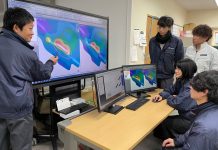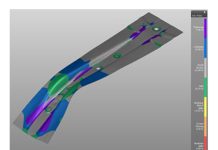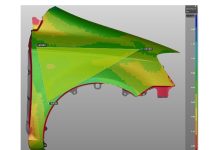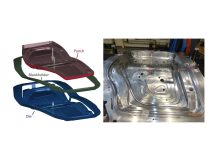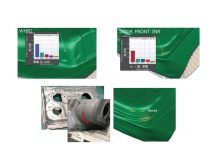
We’re Building What Was Simulated
Introduction
General Electric was started by Thomas Edison over a 130 years ago. GE Appliances (GEA), a Haier company has undergone sweeping internal transformation since 2016 driven by the “Zero Distance” strategy: “zero distance” between what the company makes and what their customers want, between ideas and innovation, between where products are developed and made, and their customers (1). Transformation in their business model, transformation toward a seamless and digital supply chain internally as well as externally, and much more. Transformations that have made GEA the fastest growing appliance manufacturer in the United States. In this article, we are focused on what this transformation looks like inside the process of designing and producing sheet metal parts.
Sheet metal is a vital category of material and components in the make-up of all household appliances. Challenges associated with the design and manufacture of these components in the appliance industry is not unlike those in automotive: products are developed with a focus on form and function; however, their manufacturability has an eventual and overwhelming influence on the cost, quality, and timing of the final product, and therefore on profitability. GEA’s internal transformation as it relates to this sector was anchored in its early commitment to taking control of the cost-timing balance in the design and production of desirable and high-quality products.
The traditional process
GEA designers design product through multiple iterations or revisions over which form and function targets converge; when close to finalization, the design is released to external die shops for planning and cost estimates towards building dies to produce parts. In the traditional process, this was the first opportunity for the design to undergo a detailed assessment of its manufacturability, and an estimation of the cost of its production. Product designs and sheet forming behavior being both complex, these assessments invariably result in infeasible manufacturing callouts, and suggested changes to product designs to overcome these. Suggested changes cannot all be implemented, as these affect mating components in complex assemblies; even once implemented, such revisions are rarely “once and done”, and typically require multiple time- and resource-expensive exchanges over the supply chain before finalization.
GE Appliances has learned just as in the automotive industry, the later product changes are initiated, the more expensive they become to implement; they also shrink the timeframe available to build dies capable of robust and quality-compliant production, while increasing overall cost.
It was clear this traditional process had to be re-vamped. GEA did so deliberately by developing a “zero distance” approach – zero distance (time) between design releases, starting from early milestones, and assessments of their manufacturability, with such assessments being executed internally at GEA by internal manufacturing experts, using state-of-the-art digital tools.
The current process at GE Appliances
The current, re-vamped, process in place at GEA was developed by Director John Kaikis and Senior Manager Rob Mais. Their experience as tooling engineers helped them create a process that bypassed all the redundant exchanges between the design and die shop teams for a whole range of GEA’s products.
They set up a team at their headquarters at Appliance Park in Louisville, KY. The intention was to analyze part designs with formability and feasibility in mind before product designs were released for manufacture. We will refer to this team as the simulation team.
Now we’ll discuss the different components of their process and why they fit so well together.
The design team
The design team’s responsibilities remained largely the same, working either from Appliance Park or other locations. They were still designing parts, with a focus on the appearance and functionality of the appliance. The difference is now, part designs go thru the simulation team for formability before being released to the die shop.
The simulation team
The simulation team acts as the bridge between the design team, tooling engineers and the die shop. They receive parts from the design team(s) and analyze them for problematic features.
Their job is primarily dealing with Class A parts[1] as they are the hardest to manufacture, but they also work on other inner parts from time to time. The simulation team members have a background in tooling and can therefore recommend process changes as well.
This team uses AutoForm software to evaluate proposed part designs by developing a process layout and running simulations to confirm the feasibility of the designs in the context of the proposed process. They may already know the intended press line for a part and work to ensure the part can indeed be produced on that press line. If they find design inconsistencies or process limitations, they go back to the design team. Using AutoForm, they explain all the hotspots and features requiring modifications and why they are necessary.
The design team will either make those modifications themselves or allow the simulation team to do so. This kind of guided modification eliminates all the needless communication between the design team, tooling engineers, and die shop, considerably reducing the time needed to develop and release parts that can be manufactured to GE Appliance’s stringent quality standards.
The die shop
Once the simulation, tooling, and design team have developed an acceptable part design, the design is released to the die shop for quoting, design, and build of the needed tooling. In the case of GE Appliances, the die shop performs further detailed formability analyses and develops the final process layout based upon the initial general guidance of the simulation and tooling teams. These detailed secondary analyses ensure that released designs and finalized processes conform to the die shop requirements, so they can take ownership of the manufacturing process layout. They have never had to make major changes like modifying the material type. This is because the simulation team has already completed up to 90% of the upfront work, including geometric dimensioning and tolerance (GD&T) assessments, and the application of very tight margins on safety, thinning and other quality metrics to ensure seamless assembly along with manufacturing. This has largely eliminated late-stage surprises at the die shop during their confirmation analyses, or worse, during tryouts. The die shop still has leeway to make small changes such as improving the blank size and adjusting the draw bead height and configuration for the right pressures.
Thus, the simulation team is instrumental in expediting the manufacturing process. They coordinate with the tooling engineers and design engineers to achieve a product with the best appearance while staying within the limits of the processes and other fixed factors.
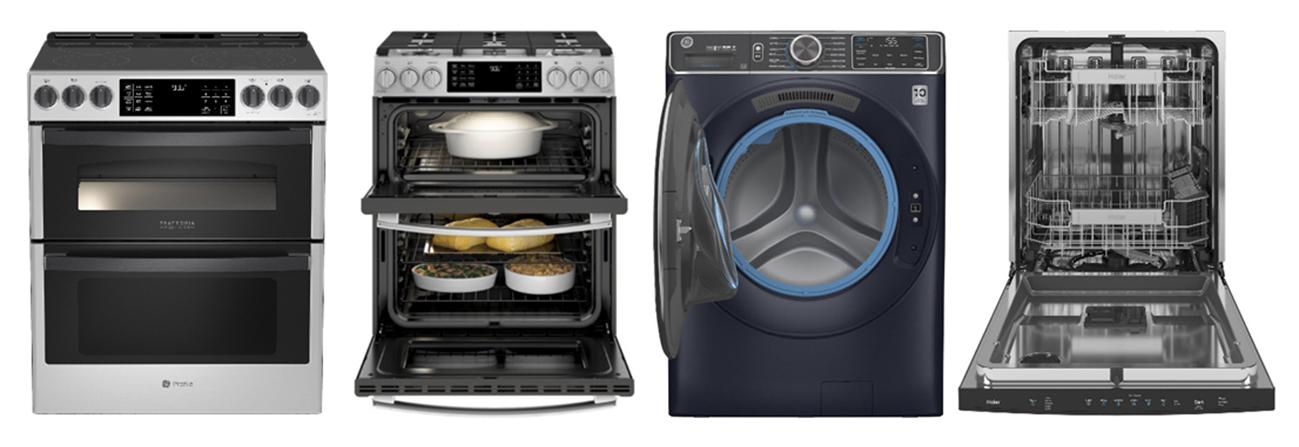
Benefits of the new process at GE Appliances
The current process established at GE Appliances is unique in many ways, delivering unprecedented benefits over the traditional process. These include:
A more systematic approach
The GE Appliances process makes the whole designing and manufacturing workflow far more cohesive and systematic. The die shop can take the released part design and immediately begin to work designing, cutting the steel, building the tool, and initiating tryout in a shorter time frame. While other OEMs are working the same way with die shops, GEA’s upfront due diligence is remarkable.
Massive time savings
The time it takes to carry out the extended interactions between the design and die shop teams is often underestimated. When the die shop receives only a simulation and they have to work with the product designers to make a change, for instance, a radius change on the part, it can take a long time.
But outlining the whole process in minute detail saves weeks (if not months) of time needed to move from the concept phase to the production phase. GEA estimates at least 50% time savings compared to the traditional process.
Better financial margins
The GEA team builds what was validated over the simulation-centered process. This has reduced their scrap and increased their throughput, ultimately improving their financial margins.
The man hours saved on each project also translate to considerable gains.
Conclusion
The founders of the simulation team keep their fingers on the pulse, always looking for ways to improve their process. Their experience in tooling helps them visualize the manufacturing process in great detail. They can find the right fit between what the design engineers want for the optimal form and function, and what the die shop is capable of producing.
The process at GE Appliances is a classic example of what can happen with a little innovation and guidance. By doing 90% of the engineering earlier, they are now enjoying a minimum 50% overall time savings.
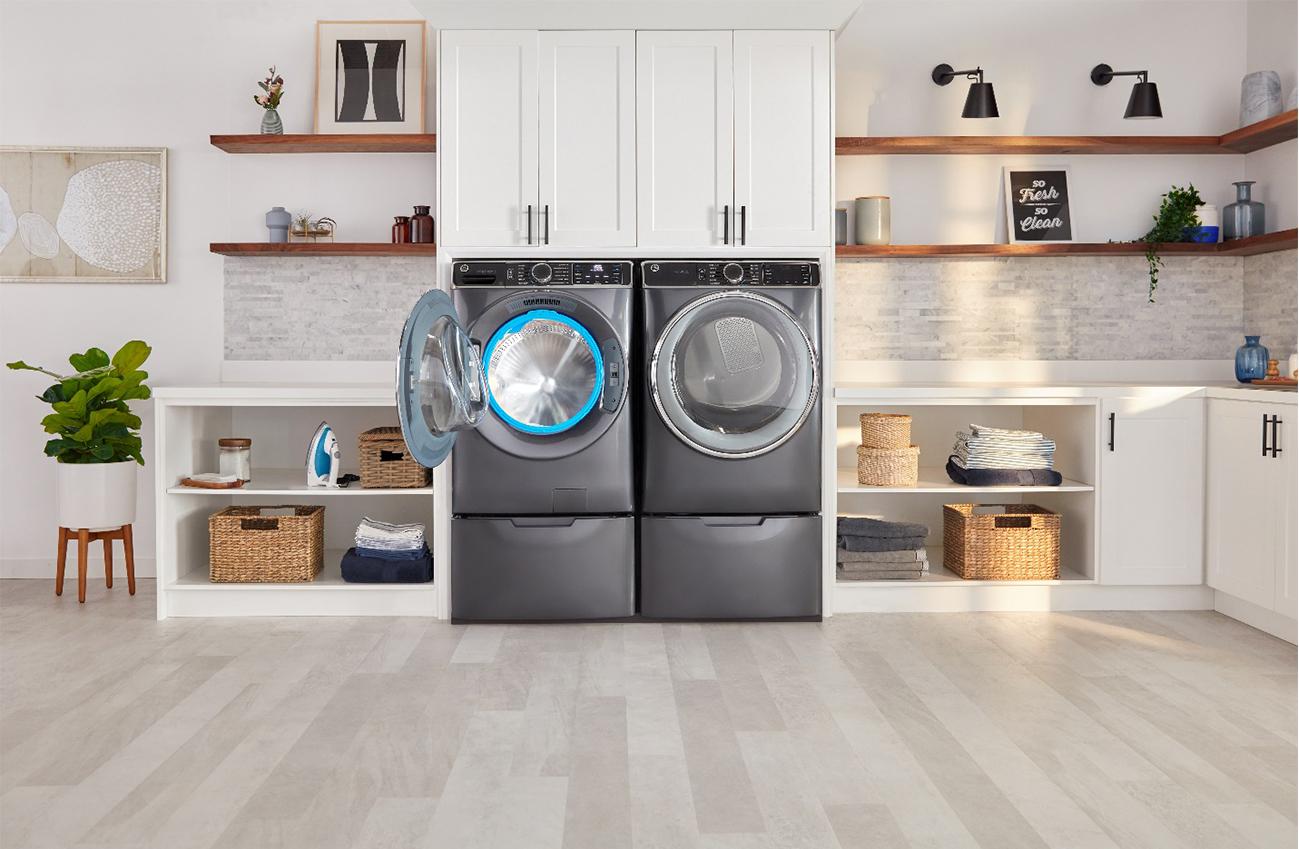
Glossary:
- Class A parts – Class A parts are the ones that make up the outer body of an appliance and typically have complicated features that require their own complex stamping and hemming processes to create. Examples include an appliance’s outer panels, refrigerator doors, washing machine lids, etc.
References:

John Panozzo – GE Appliances



